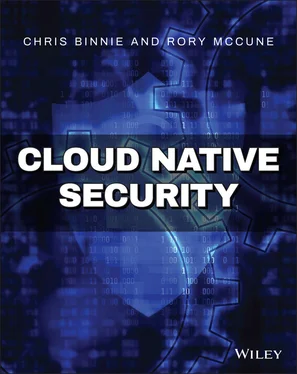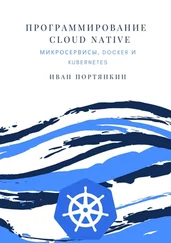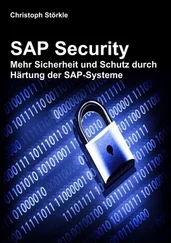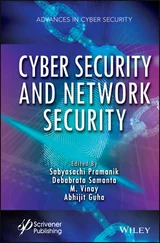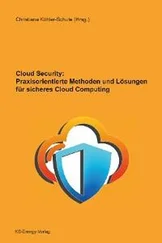Chapter 14: Cloud Guardianship This chapter examines a powerful tool that can be used to automate custom policies to prevent insecure configuration settings within a cloud environment. By gaining a clear understanding of how the tool works, you are then free to deploy some of the many examples included with the software across the AWS, Azure, and Google Cloud platforms.
Chapter 15: Cloud Auditing This chapter shows the installation and use of popular auditing tools that can run through hundreds of both Linux and cloud platform compliance tests, some of which are based on the highly popular CIS Benchmarks.
Chapter 16: AWS Cloud Storage This chapter looks at how attackers steal vast amounts of sensitive date from cloud storage on a regular basis. It also highlights how easy it is for nefarious visitors to determine whether storage is publicly accessible and then potentially download assets from that storage. In addition, the chapter identifies a paid-for service to help attackers do just that using automation.
Chapter 17: Kubernetes External Attacks This chapter is the first of Part IV, “Advanced Kubernetes and Runtime Security.” It delves deeply into API Server attacks, a common way of exploiting Kubernetes, as well as looking at other integral components of a Kubernetes cluster.
Chapter 18: Kubernetes Authorization with RBAC This chapter discusses the role-based access control functionality used for authorization within a Kubernetes cluster. By defining granular access controls, you can significantly restrict the levels of access permitted.
Chapter 19: Network Hardening This chapter explores how networking can be targeted by attackers in a Kubernetes cluster and the modern approach to limiting applications or users moving between network namespaces.
Chapter 20: Workload Hardening This chapter builds upon the knowledge learned in the earlier chapters of the book and takes a more advanced approach to the hardening of workloads in Kubernetes.
This book follows the time-honored tradition of setting coding-language keywords, modifiers, and identifiers (including URLs), when they appear in running text, in the same fixed-space fontused for displayed code listings and snippets.
We have also had to make a couple of changes from what you will see on your screen to fit the format of a printed book. First, although Linux command screens typically show white type on a dark background, that scheme does not reproduce well in printed captures. For legibility, we have reversed those screens to black-on-white.
Also note that the width of a printed page does not hold as many characters as a Linux command or output line. In cases where we have had to introduce line breaks that you would not see on the screen, we have made them at meaningful points; and in the rare instances where in entering code you would need to omit a line break we have shown, we tell you so explicitly.
As you work through the examples in this book, you will see that most of them are command-line interactions, where you enter a single command and see its output. For the automated tasks demonstrated in Chapter 19, YAML files are available for download from http://www.wiley.com/go/cloudnativesecurity.
How to Contact the Publisher
If you believe you have found a mistake in this book, please bring it to our attention. At John Wiley & Sons, we understand how important it is to provide our customers with accurate content, but even with our best efforts an error may occur.
To submit your possible errata, please email it to our Customer Service Team at wileysupport@wiley.comwith the subject line “Possible Book Errata Submission.”
Part I Container and Orchestrator Security
The Cloud Native Computing Foundation, often abbreviated as the CNCF ( www.cncf.io), reported in its 2020 survey that “the use of containers in production has increased to 92%, up from 84% last year, and up 300% from our first survey in 2016” and also that “Kubernetes use in production has increased to 83%, up from 78% last year.” The report ( www.cncf.io/wp-content/uploads/2020/12/CNCF_Survey_Report_2020.pdf) takes note of a number of useful facts that demonstrate that the way modern applications are developed and hosted is continuing to evolve using Cloud Native technologies and methodologies. A significant component, as the survey demonstrates, involves containerization, and for that reason the first six chapters of this book explore the security of containers and container orchestrators. The final part of the book examines this topic using more advanced examples and scenarios.
Chapter 1:What Is A Container?
Chapter 2:Rootless Runtimes
Chapter 3:Container Runtime Protection
Chapter 4:Forensic Logging
Chapter 5:Kubernetes Vulnerabilities
Chapter 6:Container Image CVEs
CHAPTER 1 What Is A Container?
Linux containers as we know them today have been realized through a series of incremental innovations, courtesy of a disparate group of protagonists. Destined for a place in the history books, containers have brought significant change to the way that modern software is now developed; this change will be intriguing to look back upon in the coming years ahead.
In simple terms, a container is a distinct and relatively isolated unit of code that has a specific purpose. As will be repeated later, the premise of a container is to focus on one key process (such as a web server) and its associated processes. If your web server needs to be upgraded or altered, then no other software components are affected (such as a related database container), making the construction of a technology stack more modular by design.
In this chapter, we will look at how a container is constructed and some of its fundamental components. Without this background information it is difficult to understand how to secure a containerized server estate successfully. We will start by focusing on the way software runs containers; we call that software the container runtime . We will focus on the two most prominent runtimes, Docker and Podman. An examination of the latter should also offer a valuable insight into the relatively recent advances in container runtimes.
As we work through the book, we will look at this area again from a more advanced perspective with an eye firmly on security mitigation. Purposely, rather than studying historical advances of Linux containers, this chapter focuses on identifying the components of a container that security personnel should be concerned about.
In 2014–15, the clever packaging of system and kernel components by Docker Inc. led to an explosion of interest in Linux containers. As Docker's popularity soared, a common misconception was that containers could be treated in the same way as virtual machines (VMs). As technology evolved, this became partially true, but let us consider what that misconception involved to help illustrate some of the security challenges pertinent to containers.
Along the same lines as most VMs, less-informed users trusted that Customer A had no access to Customer B's resources if each customer ran its own containers. This implicit trust is understandable. Hardware virtualization is used often on Linux systems, implemented with tools like the popular Kernel-based Virtual Machine, or KVM ( www.linux-kvm.org), for example. Virtual machines using such technologies can run on the same physical machine and do indeed share significant levels of segregation, improving their security posture significantly. Helpful information is provided in a white paper by a long-standing commercial brand, VMware, that offers a detailed look at how this works.
Читать дальше
